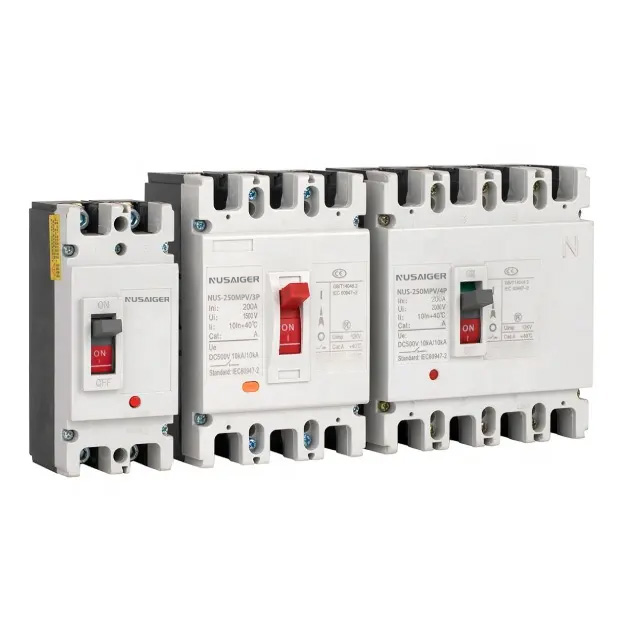DC Molded Case Circuit Breakers: What They Are, How They Work, and Why They’re Crucial in PV & Energy Storage
1. Introduction to DC MCCBs
DC molded case circuit breakers (DC MCCBs) are specialized protective devices designed to interrupt DC power circuits under overload and short-circuit conditions. In contrast to AC breakers, DC MCCBs must manage arc suppression within a continuous current flow—making their structure and mechanism fundamentally different from their AC counterparts.
2. DC vs AC Circuit Breakers: Core Differences
Unlike AC systems where current crosses zero 50–60 times per second—allowing arcs to self-extinguish—DC systems maintain continuous current, requiring robust arc-extinguishing designs. DC MCCBs often incorporate magnetic blowouts, longer arc chutes, and higher insulation ratings…
3. Structure and Operating Mechanism
Key components include insulated molded case housing, thermal-magnetic trip units, arc chutes, contacts, and operating mechanisms. Thermal elements protect against overload while magnetic trips respond instantly to fault currents…
4. Applications in PV and Energy Storage Systems
PV arrays (up to 1500 VDC) and ESS systems often require DC-rated protection devices. DC MCCBs safeguard components from fault currents, enable safe isolation for maintenance, and ensure compliance with safety standards…
5. Selection Criteria for DC MCCBs
When choosing a DC MCCB, consider parameters such as voltage rating, frame size, adjustable current setting, number of poles (single-, two-, or three-pole), trip curves (B, C, D characteristics), and breaking capacity (kA rating)…
6. Standards and Certification
Ensure the device meets relevant standards like IEC 60947‑2, UL 489 (for DC applications), and local regulations (e.g., GB 14048). Certifications denote third-party testing and compliance with temperature, UL 489 interrupting capacity, and DC-specific arc tests.
7. Installation and Commissioning Best Practices
Install in ventilated, dust‑free enclosures; torque all connections to manufacturer specifications; derate according to ambient temperature; provide clear labeling of polarity; and perform insulation resistance testing before energizing…
8. Maintenance and Troubleshooting
Regular thermal imaging (to detect hot spots), trip unit testing, cleaning of contacts and arc chutes, checking for proper operation of manual and automatic trip, and verifying insulation resistance between poles and ground.
9. Common Mistakes & How to Avoid Them
- Using AC-rated breakers in DC circuits
- Mismatched current ratings causing nuisance trips or delay
- Improper arc-chute orientation leading to inadequate arc extinction
- Poor cabling practices leading to uneven load distribution
- Neglecting ambient temperature deratings
10. Case Studies
Case Study A: Residential PV System
A 10 kW rooftop system with 600 VDC architecture employed a 2‑pole DC MCCB for string isolation. The breaker enabled safe maintenance and prevented arc damage during a short-circuit event.
Case Study B: Energy Storage Installation
A 1 MWh lithium‑ion ESS ramping system integrated with PV arrays employed multiple 1500 VDC, three‑pole DC MCCBs per battery module—ensuring safe charge/discharge isolation and fault protection.
11. Conclusion
DC MCCBs play an indispensable role in PV and ESS safety architecture. Understanding their unique design, correct selection, and proper maintenance procedures can significantly enhance system reliability and lifespan.



